- Home
- H. P. Lovecraft
Lovecraft's Fiction Volume I, 1905-1925 Page 19
Lovecraft's Fiction Volume I, 1905-1925 Read online
Page 19
Inspired by the Mother Goddess, T'yog wrote down a strange formula in the hieratic Naacal of his order, which he believed would keep the possessor immune from the Dark God's petrifying power. With this protection, he reflected, it might be possible for a bold man to climb the dreaded basalt cliffs and - first of all human beings - enter the Cyclopean fortress beneath which Ghatanothoa reputedly brooded. Face to face with the god, and with the power of Shub-Niggurath and her sons on his side, T'yog believed that he might be able to bring it to terms and at last deliver mankind from its brooding menace. With humanity freed through his efforts, there would be no limits to the honours he might claim. All the honours of the priests of Ghatanothoa would perforce be transferred to him; and even kingship or godhood might conceivably be within his reach.
So T'yog wrote his protective formula on a scroll of pthagon membrane (according to von Junzt, the inner skin of the extinct ya-kith-lizard) and enclosed it in a carven cylinder of lagh metal - the metal brought by the Elder Ones from Yuggoth, and found in no mine of earth. This charm, carried in his robe, would make him proof against the menace of Ghatanothoa - it would even restore the Dark God's petrified victims if that monstrous entity should ever emerge and begin its devastations. Thus he proposed to go up the shunned and man-untrodden mountain, invade the alien-angled citadel of Cyclopean stone, and confront the shocking devil-entity in its lair. Of what would follow, he could not even guess; but the hope of being mankind's saviour lent strength to his will.
He had, however, reckoned without the jealousy and self-interest of Ghatanothoa's pampered priests. No sooner did they hear of his plan than - fearful for their prestige and privilege in case the Daemon-God should be dethroned - they set up a frantic clamour against the so-called sacrilege, crying that no man might prevail against Ghatanothoa, and that any effort to seek it out would merely provoke it to a hellish onslaught against mankind which no spell or priestcraft could hope to avert. With those cries they hoped to turn the public mind against T'yog; yet such was the people's yearning for freedom from Ghatanothoa, and such their confidence in the skill and zeal of T'yog, that all the protestations came to naught. Even the King, usually a puppet of the priests, refused to forbid T'yog's daring pilgrimage.
It was then that the priests of Ghatanothoa did by stealth what they could not do openly. One night Imash-Mo, the High-Priest, stole to T'yog in his temple chamber and took from his sleeping form the metal cylinder; silently drawing out the potent scroll and putting in its place another scroll of great similitude, yet varied enough to have no power against any god or daemon. When the cylinder was slipped back into the sleeper's cloak Imash-Mo was content, for he knew T'yog was little likely to study that cylinder's contents again. Thinking himself protected by the true scroll, the heretic would march up the forbidden mountain and into the Evil Presence - and Ghatanothoa, unchecked by any magic, would take care of the rest.
It would no longer be needful for Ghatanothoa's priests to preach against the defiance. Let T'yog go his way and meet his doom. And secretly, the priests would always cherish the stolen scroll - the true and potent charm - handing it down from one High-Priest to another for use in any dim future when it might be needful to contravene the Devil-God's will. So the rest of the night Imash-Mo slept in great peace, with the true scroll in a new cylinder fashioned for its harbourage.
It was dawn on the Day of the Sky-Flames (nomenclature undefined by von Junzt) that T'yog, amidst the prayers and chanting of the people and with King Thabon's blessing on his head, started up the dreaded mountain with a staff of tlath-wood in his right hand. Within his robe was the cylinder holding what he thought to be the true charm - for he had indeed failed to find out the imposture. Nor did he see any irony in the prayers which Imash-Mo and the other priests of Ghatanothoa intoned for his safety and success.
All that morning the people stood and watched as T'yog's dwindling form struggled up the shunned basalt slope hitherto alien to men's footsteps, and many stayed watching long after he had vanished where a perilous ledge led round to the mountain's hidden side. That night a few sensitive dreamers thought they heard a faint tremor convulsing the hated peak; though most ridiculed them for the statement. Next day vast crowds watched the mountain and prayed, and wondered how soon T'yog would return. And so the next day, and the next. For weeks they hoped and waited, and then they wept. Nor did anyone ever see T'yog, who would have saved mankind from fears, again.
Thereafter men shuddered at T'yog's presumption, and tried not to think of the punishment his impiety had met. And the priests of Ghatanothoa smiled to those who might resent the god's will or challenge its right to the sacrifices. In later years the ruse of Imash-Mo became known to the people; yet the knowledge availed not to change the general feeling that Ghatanothoa were better left alone. None ever dared to defy it again. And so the ages rolled on, and King succeeded King, and High-Priest succeeded High-Priest, and nations rose and decayed, and lands rose above the sea and returned into the sea. And with many millennia decay fell upon K'naa - till at last on a hideous day of storm and thunder, terrific rumbling, and mountain-high waves, all the land of Mu sank into the sea forever.
Yet down the later aeons thin streams of ancient secrets trickled. In distant lands there met together grey-faced fugitives who had survived the sea-fiend's rage, and strange skies drank the smoke of altars reared to vanished gods and daemons. Though none knew to what bottomless deep the sacred peak and Cyclopean fortress of dreaded Ghatanothoa had sunk, there were still those who mumbled its name and offered to it nameless sacrifices lest it bubble up through leagues of ocean and shamble among men spreading horror and petrifaction.
Around the scattered priests grew the rudiments of a dark and secret cult - secret because the people of the new lands had other gods and devils, and thought only evil of elder and alien ones - and within that cult many hideous things were done, and many strange objects cherished. It was whispered that a certain line of elusive priests still harboured the true charm against Ghatanothoa which Imash-Mo stole from the sleeping T'yog; though none remained who could read or understand the cryptic syllables, or who could even guess in what part of the world the lost K'naa, the dreaded peak of Yaddith-Gho, and the titan fortress of the Devil-God had lain.
Though it flourished chiefly in those Pacific regions around which Mu itself had once stretched, there were rumours of the hidden and detested cult of Ghatanothoa in ill-fated Atlantis, and on the abhorred plateau of Leng. Von Junzt implied its presence in the fabled subterrene kingdom of K'n-yan, and gave clear evidence that it had penetrated Egypt, Chaldaea, Persia, China, the forgotten Semite empires of Africa, and Mexico and Peru in the New World. That it had a strong connexion with the witchcraft movement in Europe, against which the bulls of popes were vainly directed, he more than strongly hinted. The West, however, was never favourable to its growth; and public indignation - aroused by glimpses of hideous rites and nameless sacrifices - wholly stamped out many of its branches. In the end it became a hunted, doubly furtive underground affair - yet never could its nucleus be quite exterminated. It always survived somehow, chiefly in the Far East and on the Pacific Islands, where its teachings became merged into the esoteric lore of the Polynesian Areoi.
Von Junzt gave subtle and disquieting hints of actual contact with the cult; so that as I read I shuddered at what was rumoured about his death. He spoke of the growth of certain ideas regarding the appearance of the Devil-God - a creature which no human being (unless it were the too-daring T'yog, who had never returned) had ever seen - and contrasted this habit of speculation with the taboo prevailing in ancient Mu against any attempt to imagine what the horror looked like. There was a peculiar fearfulness about the devotees' awed and fascinated whispers on this subject - whispers heavy with morbid curiosity concerning the precise nature of what T'yog might have confronted in that frightful pre-human edifice on the dreaded and now-sunken mountains before the end (if it was an end) finally came - and I felt oddly disturbed by the G
erman scholar's oblique and insidious references to this topic.
Scarcely less disturbing were von Junzt's conjectures on the whereabouts of the stolen scroll of cantrips against Ghatanothoa, and on the ultimate uses to which this scroll might be put. Despite all my assurance that the whole matter was purely mythical, I could not help shivering at the notion of a latter-day emergence of the monstrous god, and at the picture of an humanity turned suddenly to a race of abnormal statues, each encasing a living brain doomed to inert and helpless consciousness for untold aeons of futurity. The old Dusseldorf savant had a poisonous way of suggesting more than he stated, and I could understand why his damnable book was suppressed in so many countries as blasphemous, dangerous, and unclean.
I writhed with repulsion, yet the thing exerted an unholy fascination; and I could not lay it down till I had finished it. The alleged reproductions of designs and ideographs from Mu were marvellously and startlingly like the markings on the strange cylinder and the characters on the scroll, and the whole account teemed with details having vague, irritating suggestions of resemblance to things connected with the hideous mummy. The cylinder and scroll - the Pacific setting - the persistent notion of old Capt. Weatherbee that the Cyclopean crypt where the mummy was found had once lain under a vast building . . . somehow I was vaguely glad that the volcanic island had sunk before that massive suggestion of a trapdoor could be opened.
IV.
What I read in the Black Book formed a fiendishly apt preparation for the news items and closer events which began to force themselves upon me in the spring of 1932. I can scarcely recall just when the increasingly frequent reports of police action against the odd and fantastical religious cults in the Orient and elsewhere commenced to impress me; but by May or June I realised that there was, all over the world, a surprising and unwonted burst of activity on the part of bizarre, furtive, and esoteric mystical organisations ordinarily quiescent and seldom heard from.
It is not likely that I would have connected these reports with either the hints of von Junzt or the popular furore over the mummy and cylinder in the museum, but for certain significant syllables and persistent resemblances - sensationally dwelt upon by the press - in the rites and speeches of the various secret celebrants brought to public attention. As it was, I could not help remarking with disquiet the frequent recurrence of a name - in various corrupt forms - which seemed to constitute a focal point of all the cult worship, and which was obviously regarded with a singular mixture of reverence and terror. Some of the forms quoted were G'tanta, Tanotah, Than-Tha, Gatan, and Ktan-Tah - and it did not require the suggestions of my now numerous occultist correspondents to make me see in these variants a hideous and suggestive kinship to the monstrous name rendered by von Junzt as Ghatanothoa.
There were other disquieting features, too. Again and again the reports cited vague, awestruck references to a "true scroll" - something on which tremendous consequences seemed to hinge, and which was mentioned as being in the custody of a certain "Nagob", whoever and whatever he might be. Likewise, there was an insistent repetition of a name which sounded like Tog, Tiok, Yog, Zob, or Yob, and which my more and more excited consciousness involuntarily linked with the name of the hapless heretic T'yog as given in the Black Book. This name was usually uttered in connexion with such cryptical phrases as "It is none other than he", "He had looked upon its face", "He knows all, though he can neither see nor feel", "He has brought the memory down through the aeons", "The true scroll will release him", "Nagob has the true scroll", "He can tell where to find it".
Something very queer was undoubtedly in the air, and I did not wonder when my occultist correspondents, as well as the sensational Sunday papers, began to connect the new abnormal stirrings with the legends of Mu on the one hand, and with the frightful mummy's recent exploitation on the other hand. The widespread articles in the first wave of press publicity, with their insistent linkage of the mummy, cylinder, and scroll with the tale in the Black Book, and their crazily fantastic speculations about the whole matter, might very well have roused the latent fanaticism in hundreds of those furtive groups of exotic devotees with which our complex world abounds. Nor did the papers cease adding fuel to the flames - for the stories on the cult-stirrings were even wilder than the earlier series of yarns.
As the summer drew on, attendants noticed a curious new element among the throngs of visitors which - after a lull following the first burst of publicity - were again drawn to the museum by the second furore. More and more frequently there were persons of strange and exotic aspect - swarthy Asiatics, long-haired nondescripts, and bearded brown men who seemed unused to European clothes - who would invariably inquire for the hall of mummies and would subsequently be found staring at the hideous Pacific specimen in a veritable ecstasy of fascination. Some quiet, sinister undercurrent in this flood of eccentric foreigners seemed to impress all the guards, and I myself was far from undisturbed. I could not help thinking of the prevailing cult-stirrings among just such exotics as these - and the connexion of those stirrings with myths all too close to the frightful mummy and its cylinder scroll.
At times I was half tempted to withdraw the mummy from exhibition - especially when an attendant told me that he had several times glimpsed strangers making odd obeisances before it, and had overheard sing-song mutterings which sounded like chants or rituals addressed to it at hours when the visiting throngs were somewhat thinned. One of the guards acquired a queer nervous hallucination about the petrified horror in the lone glass case, alleging that he could see from day to day certain vague, subtle, and infinitely slight changes in the frantic flexion of the bony claws, and in the fear-crazed expression of the leathery face. He could not get rid of the loathsome idea that those horrible, bulging eyes were about to pop suddenly open.
It was early in September, when the curious crowds had lessened and the hall of mummies was sometimes vacant, that the attempt to get at the mummy by cutting the glass of its case was made. The culprit, a swarthy Polynesian, was spied in time by a guard, and was overpowered before any damage occurred. Upon investigation the fellow turned out to be an Hawaiian notorious for his activity in certain underground religious cults, and having a considerable police record in connexion with abnormal and inhuman rites and sacrifices. Some of the papers found in his room were highly puzzling and disturbing, including many sheets covered with hieroglyphs closely resembling those on the scroll at the museum and in the Black Book of von Junzt; but regarding these things he could not be prevailed upon to speak.
Scarcely a week after this incident, another attempt to get at the mummy - this time by tampering with the lock of his case - resulted in a second arrest. The offender, a Cingalese, had as long and unsavoury a record of loathsome cult activities as the Hawaiian had possessed, and displayed a kindred unwillingness to talk to the police. What made this case doubly and darkly interesting was that a guard had noticed this man several times before, and had heard him addressing to the mummy a peculiar chant containing unmistakable repetitions of the word "T'yog". As a result of this affair I doubled the guards in the hall of mummies, and ordered them never to leave the now notorious specimen out of sight, even for a moment.
As may well be imagined, the press made much of these two incidents, reviewing its talk of primal and fabulous Mu, and claiming boldly that the hideous mummy was none other than the daring heretic T'yog, petrified by something he had seen in the pre-human citadel he had invaded, and preserved intact through 175,000 years of our planet's turbulent history. That the strange devotees represented cults descended from Mu, and that they were worshipping the mummy - or perhaps even seeking to awaken it to life by spells and incantations - was emphasised and reiterated in the most sensational fashion.
Writers exploited the insistence of the old legends that the brain of Ghatanothoa's petrified victims remained conscious and unaffected - a point which served as a basis for the wildest and most improbable speculations. The mention of a "true scroll" also received due atte
ntion - it being the prevailing popular theory that T'yog's stolen charm against Ghatanothoa was somewhere in existence, and that cult-members were trying to bring it into contact with T'yog himself for some purpose of their own. One result of this exploitation was that a third wave of gaping visitors began flooding the museum and staring at the hellish mummy which served as a nucleus for the whole strange and disturbing affair.
It was among this wave of spectators - many of whom made repeated visits - that talk of the mummy's vaguely changing aspect first began to be widespread. I suppose - despite the disturbing notion of the nervous guard some months before - that the museum's personnel was too well used to the constant sight of odd shapes to pay close attention to details; in any case, it was the excited whispers of visitors which at length aroused the guards to the subtle mutation which was apparently in progress. Almost simultaneously the press got hold of it - with blatant results which can well be imagined.
Naturally, I gave the matter my most careful observation, and by the middle of October decided that a definite disintegration of the mummy was under way. Through some chemical or physical influence in the air, the half-stony, half-leathery fibres seemed to be gradually relaxing, causing distinct variations in the angles of the limbs and in certain details of the fear-twisted facial expression. After a half-century of perfect preservation this was a highly disconcerting development, and I had the museum's taxidermist, Dr. Moore, go carefully over the gruesome object several times. He reported a general relaxation and softening, and gave the thing two or three astringent sprayings, but did not dare to attempt anything drastic lest there be a sudden crumbling and accelerated decay.
The effect of all this upon the gaping crowds was curious. Heretofore each new sensation sprung by the press had brought fresh waves of staring and whispering visitors, but now - though the papers blathered endlessly about the mummy's changes - the public seemed to have acquired a definite sense of fear which outranked even its morbid curiosity. People seemed to feel that a sinister aura hovered over the museum, and from a high peak the attendance fell to a level distinctly below normal. This lessened attendance gave added prominence to the stream of freakish foreigners who continued to infest the place, and whose numbers seemed in no way diminished.

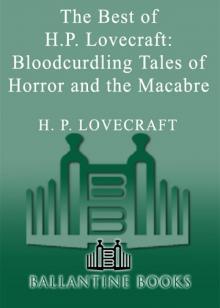 The Best of H.P. Lovecraft
The Best of H.P. Lovecraft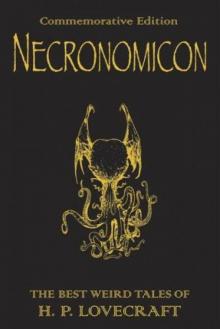 The Definitive H.P. Lovecraft: 67 Tales Of Horror In One Volume
The Definitive H.P. Lovecraft: 67 Tales Of Horror In One Volume The Complete Works of H.P. Lovecraft
The Complete Works of H.P. Lovecraft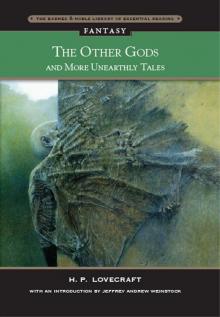 Other Gods and More Unearthly Tales
Other Gods and More Unearthly Tales Lovecraft's Fiction Volume I, 1905-1925
Lovecraft's Fiction Volume I, 1905-1925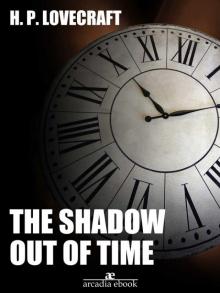 The Shadow Out of Time
The Shadow Out of Time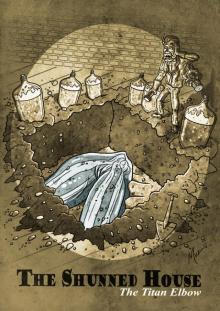 The Shunned House
The Shunned House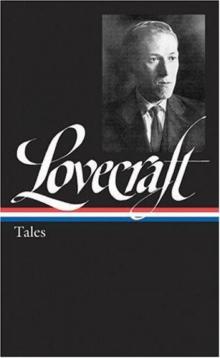 Lovecraft's Fiction Volume II, 1926-1928
Lovecraft's Fiction Volume II, 1926-1928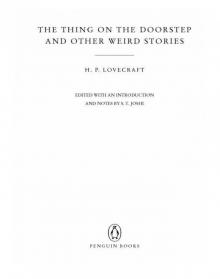 The Thing on the Doorstep and Other Weird Stories
The Thing on the Doorstep and Other Weird Stories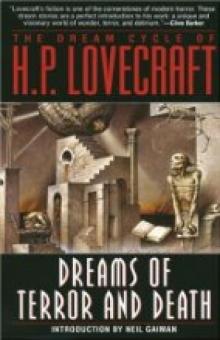 Dream Cycle of H. P. Lovecraft: Dreams of Terror and Death
Dream Cycle of H. P. Lovecraft: Dreams of Terror and Death Great Tales of Horror
Great Tales of Horror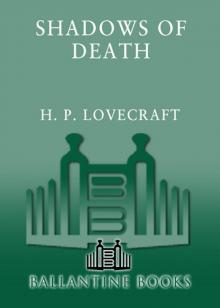 Shadows of Death
Shadows of Death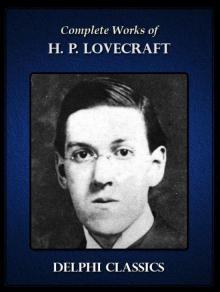 Delphi Complete Works of H. P. Lovecraft (Illustrated)
Delphi Complete Works of H. P. Lovecraft (Illustrated)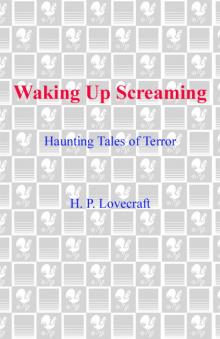 Waking Up Screaming: Haunting Tales of Terror
Waking Up Screaming: Haunting Tales of Terror H.P. Lovecraft Goes to the Movies
H.P. Lovecraft Goes to the Movies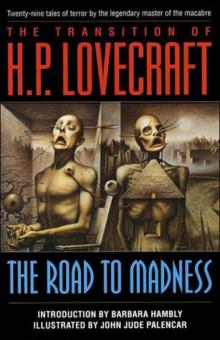 The Road to Madness
The Road to Madness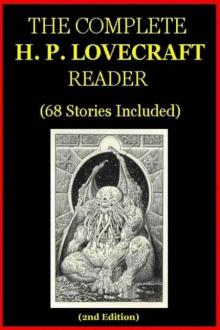 The Complete H.P. Lovecraft Reader (68 Stories)
The Complete H.P. Lovecraft Reader (68 Stories)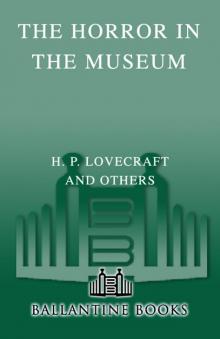 The Horror in the Museum
The Horror in the Museum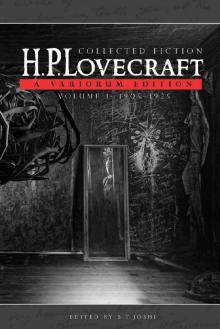 Collected Fiction Volume 1 (1905-1925): A Variorum Edition
Collected Fiction Volume 1 (1905-1925): A Variorum Edition Lovecrafts_Fiction, vol.I_1905-1925
Lovecrafts_Fiction, vol.I_1905-1925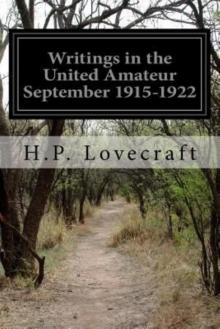 Writings in the United Amateur, 1915-1922
Writings in the United Amateur, 1915-1922 H.P. Lovecraft: The Complete Works
H.P. Lovecraft: The Complete Works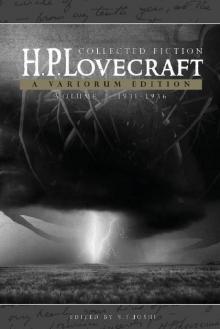 Collected Fiction Volume 3 (1931-1936): A Variorum Edition
Collected Fiction Volume 3 (1931-1936): A Variorum Edition H.P. Lovecraft: The Complete Fiction
H.P. Lovecraft: The Complete Fiction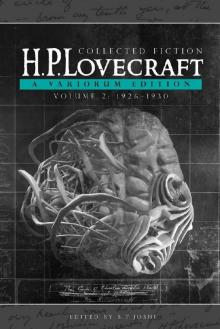 Collected Fiction Volume 2 (1926-1930): A Variorum Edition
Collected Fiction Volume 2 (1926-1930): A Variorum Edition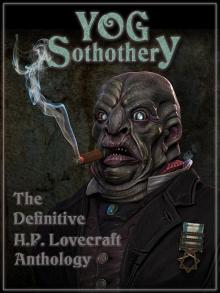 Yog Sothothery - The Definitive H.P. Lovecraft Anthology
Yog Sothothery - The Definitive H.P. Lovecraft Anthology The Complete H.P. Lovecraft Collection (Xist Classics)
The Complete H.P. Lovecraft Collection (Xist Classics)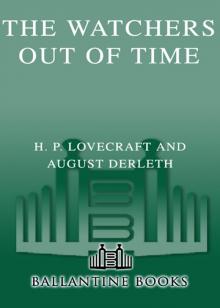 The Watchers Out of Time
The Watchers Out of Time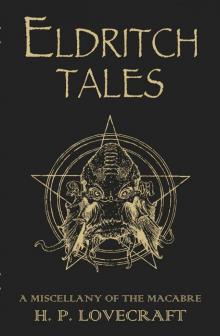 Eldritch Tales
Eldritch Tales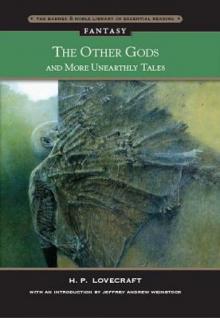 The Other Gods And More Unearthly Tales
The Other Gods And More Unearthly Tales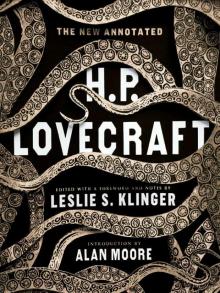 The New Annotated H. P. Lovecraft
The New Annotated H. P. Lovecraft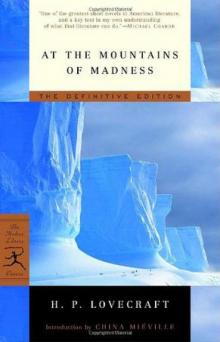 At the mountains of madness
At the mountains of madness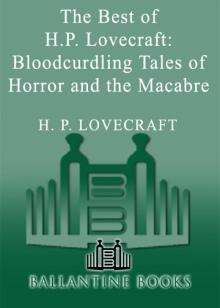 Bloodcurdling Tales of Horror and the Macabre
Bloodcurdling Tales of Horror and the Macabre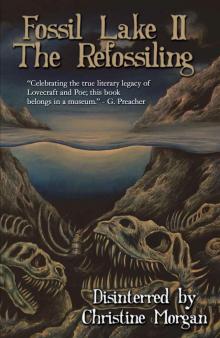 Fossil Lake II: The Refossiling
Fossil Lake II: The Refossiling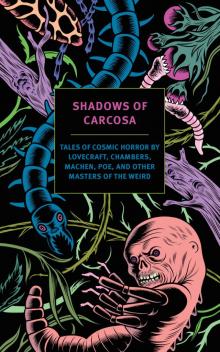 Shadows of Carcosa: Tales of Cosmic Horror by Lovecraft, Chambers, Machen, Poe, and Other Masters of the Weird
Shadows of Carcosa: Tales of Cosmic Horror by Lovecraft, Chambers, Machen, Poe, and Other Masters of the Weird H. P. Lovecraft
H. P. Lovecraft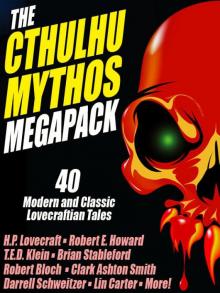 The Cthulhu Mythos Megapack
The Cthulhu Mythos Megapack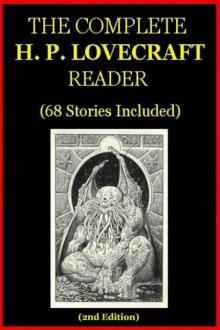 The Complete H. P. Lovecraft Reader (2nd Edition)
The Complete H. P. Lovecraft Reader (2nd Edition) The Complete Fiction
The Complete Fiction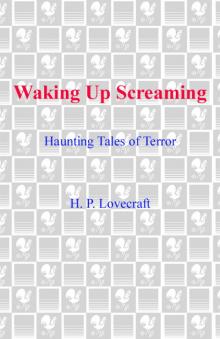 Waking Up Screaming
Waking Up Screaming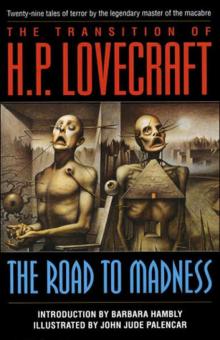 Transition of H. P. Lovecraft
Transition of H. P. Lovecraft![[1935] The Shadow Out of Time Read online](http://i1.bookreadfree.com/i2/04/12/1935_the_shadow_out_of_time_preview.jpg) [1935] The Shadow Out of Time
[1935] The Shadow Out of Time The Horror Megapack
The Horror Megapack